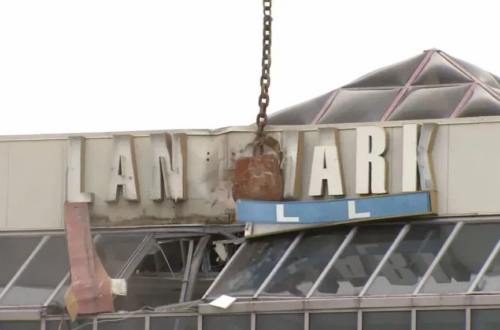Devin Johnson
Staff Writer
The auditorium stage is an important part of the school. It is where plays and assemblies happen and where the concerts the choir and orchestra put on take place. Naturally, it matters that the auditorium stage is safe for everyone who stands on it.
There have been issues with the stage dating back to when ACHS was first built. In 2007, when the building was being constructed, the builders asked Hope Bachman, a theatre and stagecraft teacher at ACHS, what she wanted the space to look like.
“I was a brand new baby teacher, and I was asked about what I needed and I told the architects and builders that the stage needed to be black,” said Bachman.
The stage needed to be black so that the attention stayed on the actors. The architects did not listen.
“We came in, and the stage was this very light blonde wood, so we painted it,” Bachman said. That wasn’t the only time Bachman had to make repairs herself. Past the painting, there are structural issues with the stage.
“When something is really truly busted, [Alexandria City Public Schools] tends to step up relatively quickly to get everybody back to functional working order. What we need to work on is maintenance [and ensure] we don’t get to a crisis point. It shouldn’t have been the theatre department’s job over the past couple years to repaint the stage so that it was [black]. But I knew that, if I wanted to get it done in the current school year, we would have to do it ourselves. [But] the past times that the stage was painted . . . It was too broken for the paint to be an effective fix.”
Bachman listed numerous issues with the stage.
“One, it didn’t look good, two, it was a safety issue for actors and dancers; if they could catch a toe on a piece of loose flooring, that could be a big problem [and] it also could cause a problem for moving sets and scenery. If a wheel got into a rut, it could get stuck and we wouldn’t be able to operate the movement of our sets cleanly,” she said.
Bachman explained the “very soft wood” had endured a lot of “wear and tear.” Due to the movement of set pieces, risers, and more, gouges dug into the stage caused splits in the wood.
“You could catch an edge and pull up a big splinter, or then just leave a sort of gash in the floor,” she said.
Toward the end of January, the auditorium was closed for a while to layer over the soft wood. Bachman described the repairs in detail.“They have taken a very thin piece of material called masonite—it’s about an eighth of an inch thick—and they’ve just put down big pieces of that all across the stage, So the entire stage has been recovered and . . . painted black. Right now, it looks pretty good.” But this might not be a long-lasting solution.
The stage may need more permanent repairs in the future. “My concern is that, because the material is so thin, I have no idea how long it’s going to last, and I don’t know what the school or school system plans to do in terms of maintenance,” said Bachman.
Bachman said she doesn’t know if the school has any plans to repair the stage in the future. If the stage does not hold up, a larger solution might be needed.
“I think at some point, and I don’t know when that is, a much bigger repair is going to need to happen where they are going to have to lift up the old floor, make sure there’s no structural damage to the beams that support [it] and replace that whole thing from the concrete up,” said Bachman.
Featured photo courtesy Devin Johnson






